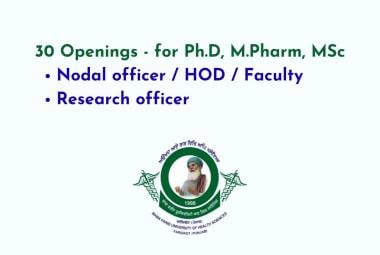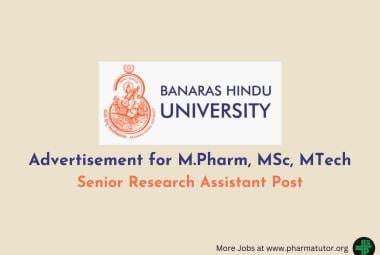ABOUT AUTHORS:
Kambham Venkateswarlu1*, N.Devann2, R.Venu Priya3, P.Bharath Rathna Kumar4
1M.Pharm Scholar, Department Of PharmaCEUTICS,
2Director Of JNTUA-Otri,
3Faculty Of Pharmacy, Department Of Pharmaceutics,
4Faculty Of Pharmacy, Department Of Pharmaceutical Chemistry,
JNTUA-Oil Technological Research Institute,
Beside Collector Office, Anantapur, Anantapur District, Andhra Pradesh, India.
Pin Code: 515001
ABSTRACT:
Cirrhosis is defined as the histological development of regenerative nodules of liver parenchyma surrounded by fibrous septa in response to chronic liver injury. Chronic liver diseases represent a significant health problem across the globe with liver cirrhosis,an end stage consequence of fibrosis, being the major medical emergency with significant morbidity and mortality.
The exact prevalence of this life threatening disease worldwide is unknown as clinical spectrum of cirrhosis ranges from indolent, asymptomatic to complete hepatic decompensation. The progression of fibrosis to cirrhosis is lower in women than men due tothe protection offered by oestrogens. The ultimate curative option for liver cirrhosis currently is liver transplantation, which poses significant risk to the patient.
REFERENCE ID: PHARMATUTOR-ART-2088
1. INTRODUCTION:
Liver fibrosis or scaring of liver is a complex,dynamic perpetuation of normal wound healing response to a variety of fibrogenic stimuli leading to activation and trans differentiation of hepatic stellate cells (HSC) to myofibroblasts leading to excessive synthesis and deposition of ECM components mainly type I and type III collagen accompanied by distortion of normal hepatic vasculature, hepatocyte dysfunction and eventually leading to irreversible liver damage, subsequent complications and possible death.[1]
2. ETIOLOGY:
1. Autoimmune
a. Autoimmune hepatitis
2. Viral/infectious
a.Hepatitis B
b.Hepatitis C
c.Schistosomiasis
3. Metabolic
a. Alcohol
b. Toxins, medications
c.Hereditary hemochromatosis
d.Wilson’s disease
e.Nonalcoholicsteatohepatitis
f.Insulin resistance
4. Cholestatic
a. Primary biliary cirrhosis
b.Primarysclerosing cholangitis
c.Biliary atresia
d.Secondary biliary cirrhosis
5. Vascular
a.Right heart failure
b.Budd–Chiari syndrome
c.Alpha-1-antitrypsin deficiency
d.Sarcoidosis
e.Cystic fibrosis[2]
3. COMPLICATIONS OF CIRRHOSIS:
1. Impaired metabolic and endocrine functions: Jaundice occurs due to compromised hepatocyte excretory function.
2. Spider angiomata due to decreased oestradiol degradation in liver.
3. Splenomegaly due to portal hypertension.
4. Hematological derangements such as thrombocytopenia.
5. Ascites a severe complication due to portal hypertension.
6. Hyponatremia.
7. Gastrointestinal varices.
8. Spontaneous bacterial peritonitis.
9. Hepatic encephalopathy.
10. Hepatorenal syndrome.
11. Hepatocelluar carcinoma.[2]
4. DIAGNOSIS:
1.Serological: AST, ALT, ALP, Gamma-glutamyl transpeptidase, bilirubin, albumin, prothrombin time, immunoglobulins mainly IgG, sodium.
2.Histological: Liver biopsy which is considered as the gold standard for diagnosis and sequential histological grading of fibrosis.
3.Radiodiagnosis: Ultrasonography, CT and MRI.
4.Transientelastography[2]
5. ANIMAL MODELS OF LIVER FIBROSIS:
Several approaches to induce liver fibrosis in animal are described according to their stimulus from inciting injury. Liver fibrosis models are associated with
1) Toxic damage: (hepatocyte toxicity induced by: CCl4,dimethylnitrosamine(DMN), galactosamine and bileduct epithelial cell toxicity by thioacetamide(TAA).
2) Immunologically induced damage (heterologous serum (porcine) and experimental schistosomiasis)
3) Biliary damage (common bile duct ligation or occlusion)
4) Alcohol induced damage
5) Fatty liver disease in particular the malignant inflammatory form non alcoholicsteatohepatitis (NASH), can progress to liver fibrosis and cirrhosis.
BDL and CCl4 are the most widely used rodent models in liver fibrosis to assess the effectivity of experimental drugs on the pathogenesis, because these models represent features of human pathogenesis and are best characterised with respect to histological, biochemical, molecular changes associated with fibrosis.[5]
5.1. Acute and chronic models with carbon Tetrachloride (CCl4)
The damage to hepatocytes by CCl4 is reflected by high plasma alanine tranaminase(ALT) and aspartate transaminase(AST) levels after CCl4 administration. CCl4 also causes fatty changes in the hepatocytes.This initial damage is followed by hepatic stellate cell activation and tissue fibrosis.
The CCl4 model is associated with tremendous inflammation, a feature that is also seen in livers of patient with liver fibrosis. In animal models, CCl4 treatment is used to obtain different stages of the fibrotic process,ranging from early damage and HSC activation until advanced cirrhosis.
CCl4 is administered to the animals via i.p., s.c., oral administration, or by inhalation. Fori.p injections, CCl4 is diluted in olive oil and given in doses of 0.5-1.0ml/kg to rats and mice Often supplementation of phenobarbital in drinking water is used to get more reproducible fibrosis development and to accelerate the speed of fibrosis development.
Disadvantages of this model are the variations obtain in disease induction in animals and relatively high rate of mortality after CCl4 administration.[5]
5.2. Galactosamine induced hepatotoxicity
D-Galactosamine (400 mg/kg, i.p) produces diffuse type of liver injury simulating viral hepatitis. It presumably disrupts the synthesis of essential uridylate nucleotides resulting in organelle injury and ultimately cell death. Depletion of those nucleotides would impede the normal synthesis of RNA and consequently would produce a decline in protein synthesis. This mechanism of toxicity brings about an increase in cell membrane permeability leading to enzyme leakage and eventually cell death. The cholestasis caused by galactosamine may be from its damaging effects on bile ducts or ductules or canalicular membrane of hepatocytes Galactosamine decrease the bile flow and it’s content i.e. bile salts, cholic acid and deoxycholic acid. Galactosamine reduces the number of viable hepatocytes as well as rate of oxygen consumption.
Dose of D-Galactosamine: 400 mg/kg, I.P.[3, 4]
5.3.Thioacetamide induced hepatotoxicity
Thioacetamide (100 mg/kg,s.c) e interferes with the movement of RNA from the nucleus to cytoplasm which may cause membrane injury. A metabolite of thioacetamide (perhaps s-oxide) is responsible for hepatic injury. Thioacetamide reduce the number of viable hepatocytes as well as rate of oxygen consumption. It also decreases the volume of bile and it’s content i.e. bile salts, cholic acid and deoxycholic acid. Dose of thioacetamide: 100 mg/kg, S.C.[3]
5.4. Alcohol induced hepatotoxicity
Liver is among the organs most susceptible to the toxic effects of ethanol. Alcohol consumption is known to cause fatty infiltration, hepatitis and cirrhosis. Hepatitis and cirrhosis may occur because of enhanced lipid peroxidative reaction during the microsomal metabolism of ethanol. Among the mechanisms responsible for effects of alcohol, an increase in hepatic lipid peroxidation leads to alteration in membrane phospholipid composition.The peroxidation of membrane lipids results in loss of membrane structure and integrity.[5]
This result in elevated levels of ¡-glutamyltranspeptidase, a membrane bound enzyme in serum. The decrease in activity of antioxidant enzymes superoxide dismutase, glutathione peroxidase are speculated to be due to the damaging effects of free radicals produced following ethanol exposure or alternatively could be due to a direct effect of acetaldehyde, formed by oxidation of ethanol.[5]
Alcohol pre-treatment stimulates the toxicity of CCl4 due to increased production of toxic reactive metabolites of CCl4 ,namelytrichloro-methyl radical by the microsomal mixed function oxidative system. This activated radical binds covalently to the macromolecules and induces peoxidative degradation of membrane lipids of endoplasmic reticulum rich in polyunsaturated fatty acids. This lipid peroxidative degradation of bio membranes is the principle cause of hepatotoxity.[5]
NOW YOU CAN ALSO PUBLISH YOUR ARTICLE ONLINE.
SUBMIT YOUR ARTICLE/PROJECT AT articles@pharmatutor.org
Subscribe to Pharmatutor Alerts by Email
FIND OUT MORE ARTICLES AT OUR DATABASE
5.5.Paracetamol induced hepatotoxicity
Paracetamol administration causes necrosis of the centrilobular hepatocytes characterized by nuclear pyknosis and eosinophilic cytoplasm followed by large excessive hepatic lesion. The covalent binding of N-acetyl-P-benzoquinoneimine, an oxidative product of paracetamol to sulphydryl groups of protein, result in lipid peroxidative degradation of glutathione level and thereby, produces cell necrosis in the liver. Dose of Paracetamol: 1 gm/kg P.O.[4]
5.6. Antitubercular drugs induced hepatotoxicity
Drug induced hepatotoxicity is a potentially serious adverse effect of the currently used antitubercular therapeutic regimens containing Isoniazid (INH), Rifampicin and Pyrazinamide. Thus, though INH, Rifampicin and Pyrazinamide each in itself are potentially hepatotoxic, when given in combination, their toxic effect is enhanced. INH is metabolized to monoacetyl hydrazine, which is further metabolized to a toxic product by cytochrome P 450 leading to hepatotoxicity. Patients on concurrent rifampicin therapy have an increased incidence of hepatitis. This has been postulated due to rifampicin-induced cytochrome P 450 enzyme-induction, causing an increased production of the toxic metabolites from acetyl hydrazine (AcHz). Rifampicin also increases the metabolism of INH to isonicotinic acid and hydrazine, both of which are hepatotoxic. Rifampicin induces hydrolysis pathway of INH metabolism into the hepatotoxic metabolite hydrazine. [3]
5.7. Bile duct ligation (BDL):
This model is the second most widely used experimental model (3)of advanced liver disease and corresponds with the human pathology of biliary cirrhosis, such as extra hepatic biliary atresia and primary sclerosingcholangitis. Ligation of the bile duct causes acute epithelial damage, and the detergent action of the subsequently released bile salts in the liver is likely associated with the solubilization of plasma membranes and hepatocyte cell death. This latter is visualized by elevated ALT and AST levels in plasma, in particular immediately after ligation. Characteristics of obstruction of the bile are the appearance of bile products such as bilirubin into the blood circulation which causes jaundice in the animals.[6]
The initial damage is followed by massive expansion of the bile duct epithelial cells and periductalmyofibroblast, which can be referred to as portal expansion, results in marked liver enlargement which can be upto twice the weight as compared to the normal and causes gradual remodelling of liver architecture causing biliary cirrhosis.[6]
To ligate the bile duct the abdomen of the rat is opened under general anesthesia to identify the common bile duct. The bile duct runs from the hilum of the liver, where the hepatic ducts meet,through the pancreas, into the lower end of the duodenum. Three ligatures are placed and tied around the bile duct: two close to the liver and one close to the duodenum. The first ligatures will prevent formation of reservoir of bile outside the liver. After tight closure the bile duct is cut between the second and third ligation in order to prevent restoration of the bile flow by bile duct formation around the ligature. Subsequently the abdomen is closed again and analgesics are given to rats.[6]
The major advantage of the BDL model is the relatively fast development of fibrosis (within 3 weeks) in rats. Furthermore, the model is quite reproducible, and the mortality due to the ligation procedure in rats is low. Thus BDL is a well-established experimental model of :
1.Acute obstructive jaundice, studying different time points up to two weeks after BDL.
2.Progression of biliary fibrosis to cirrhosis, studying different time points up to four or six weeks after BDL.
3.Secondary biliary cirrhosis at four or six weeks.
BDL Produces a combined model of cholemia and parenchymal liver disease. renal failure observed in the chronic BDL model shares pathophysiological similarities with HRS. thus BDL model may provide thus with a valuable experimental model for the study of hepatorenal syndrome and its potential therapies.[6]
6. CONCLUSION:
The damage to hepatocytes cause an impairement in liver functions occurs. So before taking any drug that should not affect much severely hepatocytes.
7. REFERENCES:
1. Harshmohan. The liver, biliary tract and exocrine pancreas. In: Text book of pathology, 4 thEd, Jaypee Brothers Medical Publishers (P) Ltd. New Delhi, 2002; 22-4 and 569-630.
2. Cameron GR, Thomas JC and Karunarathe WAE. The pathogenesis of liver injury in carbon tetrachloride and thioacetamidepoisioning. J. Path. Bact. 1936; 41: 297
3. Handa SS and Sharma A. Hepatoprotective activity of Andrographolide from Andrographis paniculataagainst carbon tetrachloride. Ind. J. Med. Res. 1990; 92: 276-92.
4. Shirwaiker A, Sreenivasan KK, Krishnanand BR and Kumar AV. Chemical investigation and anti hepatotoxic activity of the root bark of Caparisspinosa. Fitoterapia.1996; 67 (3): 200-4.
5. Agarwal AK and Mehendale JK. Potentiation of carbon tetrachloride hepatotoxicity and lethality by chlordecone in female rats. Toxicology, 1983; 26:231-42.
6. KountourasJ, BillingBH, ScheurPJ. Prolonged bile duct obstruction: A new experimental model for cirrhosis in the rat. Br.Journal of experimental pathology 1984;65:305-311.
NOW YOU CAN ALSO PUBLISH YOUR ARTICLE ONLINE.
SUBMIT YOUR ARTICLE/PROJECT AT articles@pharmatutor.org
Subscribe to Pharmatutor Alerts by Email
FIND OUT MORE ARTICLES AT OUR DATABASE









